�
PROBABILITY AND STATISTICAL INFERENCE
Ninth Edition
Robert V. Hogg
Elliot A. Tanis
Dale L. Zimmerman
Boston Columbus Indianapolis New York San Francisco
Upper Saddle River Amsterdam Cape Town Dubai
London Madrid Milan Munich Paris Montreal Toronto
Delhi Mexico City Sao Paulo Sydney Hong Kong Seoul
Singapore Taipei Tokyo
Editor in Chief: Deirdre Lynch
Acquisitions Editor: Christopher Cummings
Sponsoring Editor: Christina Lepre
Assistant Editor: Sonia Ashraf
Marketing Manager: Erin Lane
Marketing Assistant: Kathleen DeChavez
Senior Managing Editor: Karen Wernholm
Senior Production Editor: Beth Houston
Procurement Manager: Vincent Scelta
Procurement Specialist: Carol Melville
Associate Director of Design, USHE EMSS/HSC/EDU: Andrea Nix
Art Director: Heather Scott
Interior Designer: Tamara Newnam
Cover Designer: Heather Scott
Cover Image: Agsandrew/Shutterstock
Full-Service Project Management: Integra Software Services
Composition: Integra Software Services
Copyright c 2015, 2010, 2006 by Pearson Education, Inc. All rights reserved. Manufactured
in the United States of America. This publication is protected by Copyright, and permission
should be obtained from the publisher prior to any prohibited reproduction, storage in a
retrieval system, or transmission in any form or by any means, electronic, mechanical,
photocopying, recording, or likewise. To obtain permission(s) to use material from this work,
please submit a written request to Pearson Higher Education, Rights and Contracts
Department, One Lake Street, Upper Saddle River, NJ 07458, or fax your request to
201-236-3290.
Many of the designations by manufacturers and seller to distinguish their products are
claimed as trademarks. Where those designations appear in this book, and the publisher was
aware of a trademark claim, the designations have been printed in initial caps or all caps.
Library of Congress Cataloging-in-Publication Data
Hogg, Robert V.
Probability and Statistical Inference/
Robert V. Hogg, Elliot A. Tanis, Dale Zimmerman. – 9th ed.
p. cm.
ISBN 978-0-321-92327-1
1. Mathematical statistics. I. Hogg, Robert V., II. Tanis, Elliot A. III. Title.
QA276.H59 2013
519.5–dc23
2011034906
10
9 8 7
6 5
4 3 2
1 EBM 17 16
15 14
13
www.pearsonhighered.com
ISBN-10:
0-321-92327-8
ISBN-13: 978-0-321-92327-1
�
Contents
Preface v
Prologue vii
1 Probability 1
Properties of Probability 1
1.1
1.2 Methods of Enumeration 11
1.3 Conditional Probability 20
1.4
1.5
Independent Events 29
Bayes’ Theorem 35
2 Discrete Distributions 41
Special Mathematical Expectations 56
2.1 Random Variables of the Discrete Type 41
2.2 Mathematical Expectation 49
2.3
2.4 The Binomial Distribution 65
2.5 The Negative Binomial Distribution 74
2.6 The Poisson Distribution 79
3 Continuous Distributions 87
3.1 Random Variables of the Continuous
Type 87
3.2 The Exponential, Gamma, and Chi-Square
Distributions 95
3.3 The Normal Distribution 105
3.4* Additional Models 114
4 Bivariate Distributions 125
4.1
Bivariate Distributions of the Discrete
Type 125
4.2 The Correlation Coefficient 134
4.3 Conditional Distributions 140
4.4
Bivariate Distributions of the Continuous
Type 146
4.5 The Bivariate Normal Distribution 155
5 Distributions of Functions
of Random Variables 163
Functions of One Random Variable 163
5.1
5.2 Transformations of Two Random
Variables 171
Several Random Variables 180
5.3
5.4 The Moment-Generating Function
Technique 187
5.5 Random Functions Associated with Normal
Distributions 192
5.6 The Central Limit Theorem 200
5.7 Approximations for Discrete
Distributions 206
5.8 Chebyshev’s Inequality and Convergence
in Probability 213
Limiting Moment-Generating Functions 217
5.9
6 Point Estimation 225
Exploratory Data Analysis 238
6.1 Descriptive Statistics 225
6.2
6.3 Order Statistics 248
6.4 Maximum Likelihood Estimation 256
6.5 A Simple Regression Problem 267
6.6* Asymptotic Distributions of Maximum
Likelihood Estimators 275
Sufficient Statistics 280
Bayesian Estimation 288
6.7
6.8
6.9* More Bayesian Concepts 294
7 Interval Estimation 301
Confidence Intervals for Means 301
7.1
7.2 Confidence Intervals for the Difference
of Two Means 308
7.3 Confidence Intervals for Proportions 318
7.4
Sample Size 324
iii
�
iv Contents
7.5 Distribution-Free Confidence Intervals
for Percentiles 331
Epilogue 479
7.6* More Regression 338
7.7* Resampling Methods 347
8 Tests of Statistical
Hypotheses 355
8.1 Tests About One Mean 355
8.2 Tests of the Equality of Two Means 365
8.3 Tests About Proportions 373
8.4 The Wilcoxon Tests 381
8.5
Power of a Statistical Test 392
8.6
Best Critical Regions 399
8.7* Likelihood Ratio Tests 406
9 More Tests 415
9.1 Chi-Square Goodness-of-Fit Tests 415
9.2 Contingency Tables 424
9.3 One-Factor Analysis of Variance 435
9.4 Two-Way Analysis of Variance 445
9.5* General Factorial and 2k Factorial
Designs 455
9.6* Tests Concerning Regression and
Correlation 462
9.7* Statistical Quality Control 467
Appendices
A References 481
B Tables 483
C Answers to Odd-Numbered
Exercises 509
D Review of Selected
Mathematical Techniques 521
D.1 Algebra of Sets 521
D.2 Mathematical Tools for the Hypergeometric
Distribution 525
D.3 Limits 528
D.4 Infinite Series 529
D.5 Integration 533
D.6 Multivariate Calculus 535
Index 541
�
Preface
In this Ninth Edition of Probability and Statistical Inference, Bob Hogg and Elliot
Tanis are excited to add a third person to their writing team to contribute to the
continued success of this text. Dale Zimmerman is the Robert V. Hogg Professor in
the Department of Statistics and Actuarial Science at the University of Iowa. Dale
has rewritten several parts of the text, making the terminology more consistent and
contributing much to a substantial revision. The text is designed for a two-semester
course, but it can be adapted for a one-semester course. A good calculus background
is needed, but no previous study of probability or statistics is required.
CONTENT AND COURSE PLANNING
In this revision, the first five chapters on probability are much the same as in the
eighth edition. They include the following topics: probability, conditional probability,
independence, Bayes’ theorem, discrete and continuous distributions, certain math-
ematical expectations, bivariate distributions along with marginal and conditional
distributions, correlation, functions of random variables and their distributions,
including the moment-generating function technique, and the central limit theorem.
While this strong probability coverage of the course is important for all students, it
has been particularly helpful to actuarial students who are studying for Exam P in
the Society of Actuaries’ series (or Exam 1 of the Casualty Actuarial Society).
The greatest change to this edition is in the statistical inference coverage, now
Chapters 6–9. The first two of these chapters provide an excellent presentation
of estimation. Chapter 6 covers point estimation, including descriptive and order
statistics, maximum likelihood estimators and their distributions, sufficient statis-
tics, and Bayesian estimation. Interval estimation is covered in Chapter 7, including
the topics of confidence intervals for means and proportions, distribution-free con-
fidence intervals for percentiles, confidence intervals for regression coefficients, and
resampling methods (in particular, bootstrapping).
The last two chapters are about tests of statistical hypotheses. Chapter 8 consid-
ers terminology and standard tests on means and proportions, the Wilcoxon tests,
the power of a test, best critical regions (Neyman/Pearson) and likelihood ratio
tests. The topics in Chapter 9 are standard chi-square tests, analysis of variance
including general factorial designs, and some procedures associated with regression,
correlation, and statistical quality control.
The first semester of the course should contain most of the topics in Chapters
1–5. The second semester includes some topics omitted there and many of those
in Chapters 6–9. A more basic course might omit some of the (optional) starred
sections, but we believe that the order of topics will give the instructor the flexibility
needed in his or her course. The usual nonparametric and Bayesian techniques are
placed at appropriate places in the text rather than in separate chapters. We find that
many persons like the applications associated with statistical quality control in the
last section. Overall, one of the authors, Hogg, believes that the presentation (at a
somewhat reduced mathematical level) is much like that given in the earlier editions
of Hogg and Craig (see References).
v
�
vi Preface
The Prologue suggests many fields in which statistical methods can be used. In
the Epilogue, the importance of understanding variation is stressed, particularly for
its need in continuous quality improvement as described in the usual Six-Sigma pro-
grams. At the end of each chapter we give some interesting historical comments,
which have proved to be very worthwhile in the past editions.
The answers given in this text for questions that involve the standard distribu-
tions were calculated using our probability tables which, of course, are rounded off
for printing. If you use a statistical package, your answers may differ slightly from
those given.
ANCILLARIES
Data sets from this textbook are available on Pearson Education’s Math & Statistics
Student Resources website: http://www.pearsonhighered.com/mathstatsresources.
An Instructor’s Solutions Manual containing worked-out solutions to the even-
numbered exercises in the text is available for download from Pearson Education’s
Instructor Resource Center at www.pearsonhighered.com/irc. Some of the numer-
ical exercises were solved with Maple. For additional exercises that involve sim-
ulations, a separate manual, Probability & Statistics: Explorations with MAPLE,
second edition, by Zaven Karian and Elliot Tanis, is also available for download from
Pearson Education’s Instructor Resource Center. Several exercises in that manual
also make use of the power of Maple as a computer algebra system.
If you find any errors in this text, please send them to tanis@hope.edu so that
they can be corrected in a future printing. These errata will also be posted on
http://www.math.hope.edu/tanis/.
ACKNOWLEDGMENTS
We wish to thank our colleagues, students, and friends for many suggestions and
for their generosity in supplying data for exercises and examples. In particular, we
would like to thank the reviewers of the eighth edition who made suggestions for
this edition. They are Steven T. Garren from James Madison University, Daniel C.
Weiner from Boston University, and Kyle Siegrist from the University of Alabama
in Huntsville. Mark Mills from Central College in Iowa also made some helpful com-
ments. We also acknowledge the excellent suggestions from our copy editor, Kristen
Cassereau Ng, and the fine work of our accuracy checkers, Kyle Siegrist and Steven
Garren. We also thank the University of Iowa and Hope College for providing office
space and encouragement. Finally, our families, through nine editions, have been
most understanding during the preparation of all of this material. We would espe-
cially like to thank our wives, Ann, Elaine, and Bridget. We truly appreciate their
patience and needed their love.
Robert V. Hogg
Elliot A. Tanis
tanis@hope.edu
Dale L. Zimmerman
dale-zimmerman@uiowa.edu
�
Prologue
The discipline of statistics deals with the collection and analysis of data. Advances
in computing technology, particularly in relation to changes in science and business,
have increased the need for more statistical scientists to examine the huge amount
of data being collected. We know that data are not equivalent to information. Once
data (hopefully of high quality) are collected, there is a strong need for statisticians
to make sense of them. That is, data must be analyzed in order to provide informa-
tion upon which decisions can be made. In light of this great demand, opportunities
for the discipline of statistics have never been greater, and there is a special need for
more bright young persons to go into statistical science.
If we think of fields in which data play a major part, the list is almost endless:
accounting, actuarial science, atmospheric science, biological science, economics,
educational measurement, environmental science, epidemiology, finance, genetics,
manufacturing, marketing, medicine, pharmaceutical industries, psychology, sociol-
ogy, sports, and on and on. Because statistics is useful in all of these areas, it really
should be taught as an applied science. Nevertheless, to go very far in such an applied
science, it is necessary to understand the importance of creating models for each sit-
uation under study. Now, no model is ever exactly right, but some are extremely
useful as an approximation to the real situation. Most appropriate models in statis-
tics require a certain mathematical background in probability. Accordingly, while
alluding to applications in the examples and the exercises, this textbook is really
about the mathematics needed for the appreciation of probabilistic models necessary
for statistical inferences.
In a sense, statistical techniques are really the heart of the scientific method.
Observations are made that suggest conjectures. These conjectures are tested, and
data are collected and analyzed, providing information about the truth of the
conjectures. Sometimes the conjectures are supported by the data, but often the
conjectures need to be modified and more data must be collected to test the mod-
ifications, and so on. Clearly, in this iterative process, statistics plays a major role
with its emphasis on the proper design and analysis of experiments and the resulting
inferences upon which decisions can be made. Through statistics, information is pro-
vided that is relevant to taking certain actions, including improving manufactured
products, providing better services, marketing new products or services, forecasting
energy needs, classifying diseases better, and so on.
Statisticians recognize that there are often small errors in their inferences, and
they attempt to quantify the probabilities of those mistakes and make them as small
as possible. That these uncertainties even exist is due to the fact that there is variation
in the data. Even though experiments are repeated under seemingly the same condi-
tions, the results vary from trial to trial. We try to improve the quality of the data by
making them as reliable as possible, but the data simply do not fall on given patterns.
In light of this uncertainty, the statistician tries to determine the pattern in the best
possible way, always explaining the error structures of the statistical estimates.
This is an important lesson to be learned: Variation is almost everywhere. It is
the statistician’s job to understand variation. Often, as in manufacturing, the desire is
to reduce variation because the products will be more consistent. In other words, car
vii
�
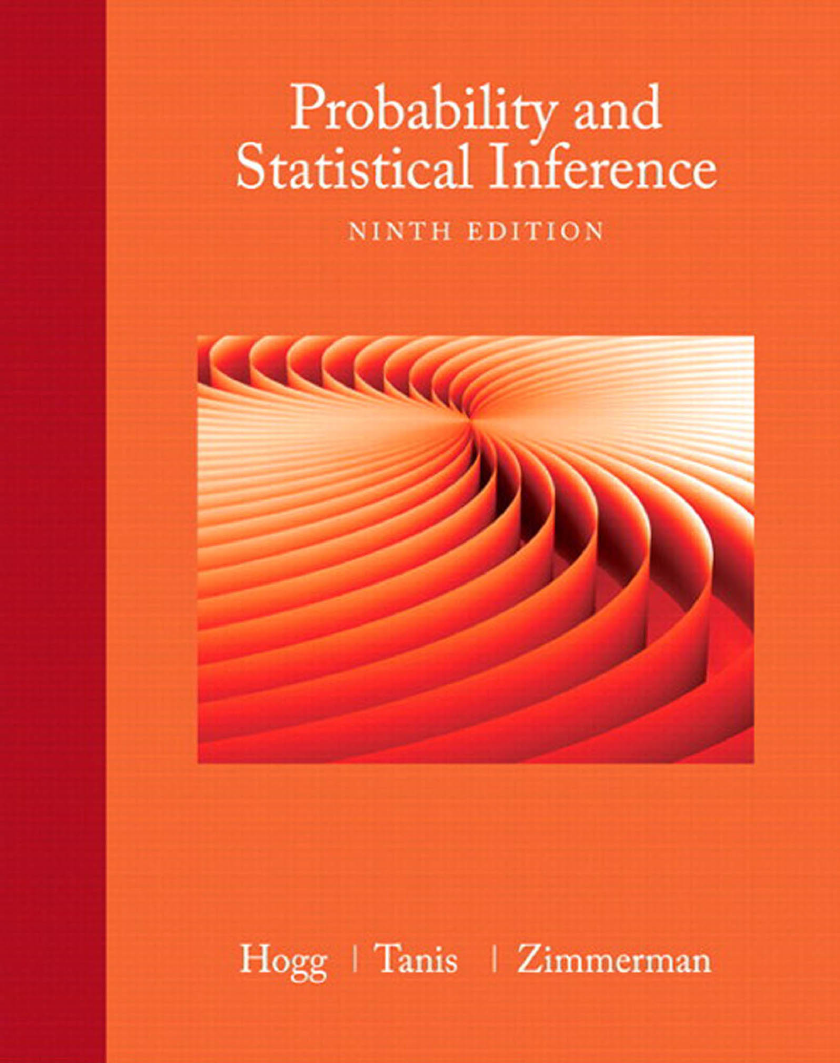
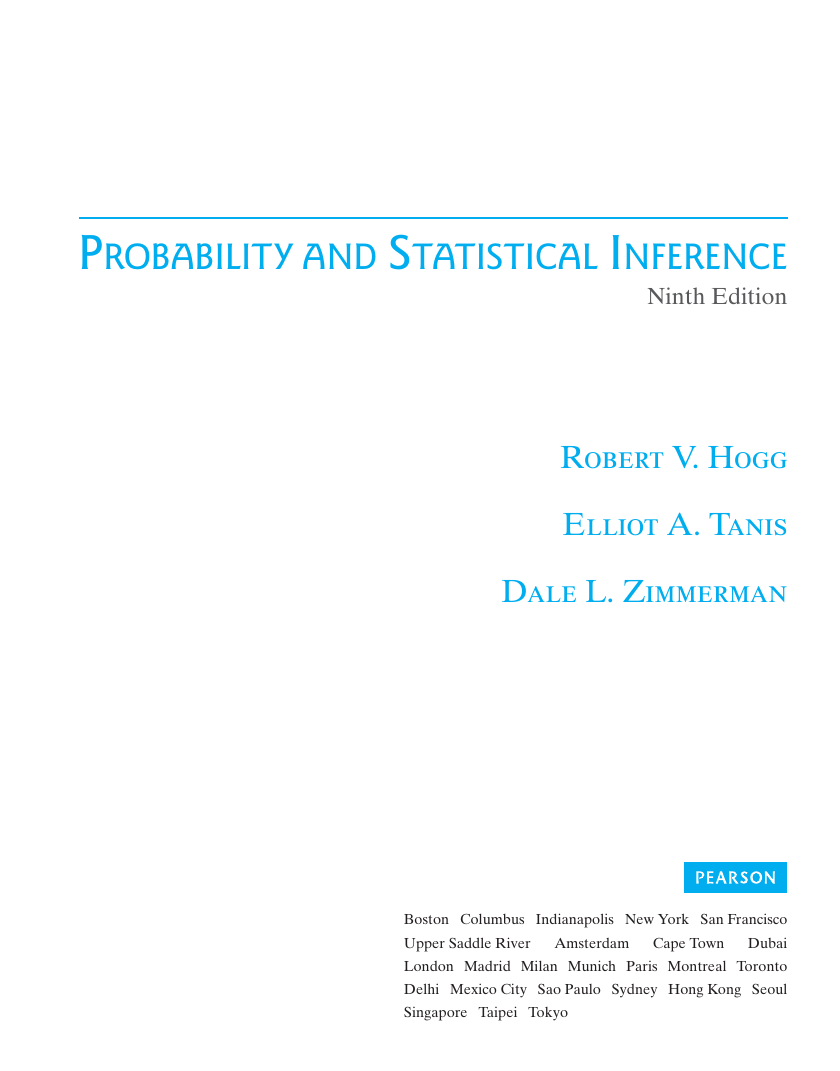
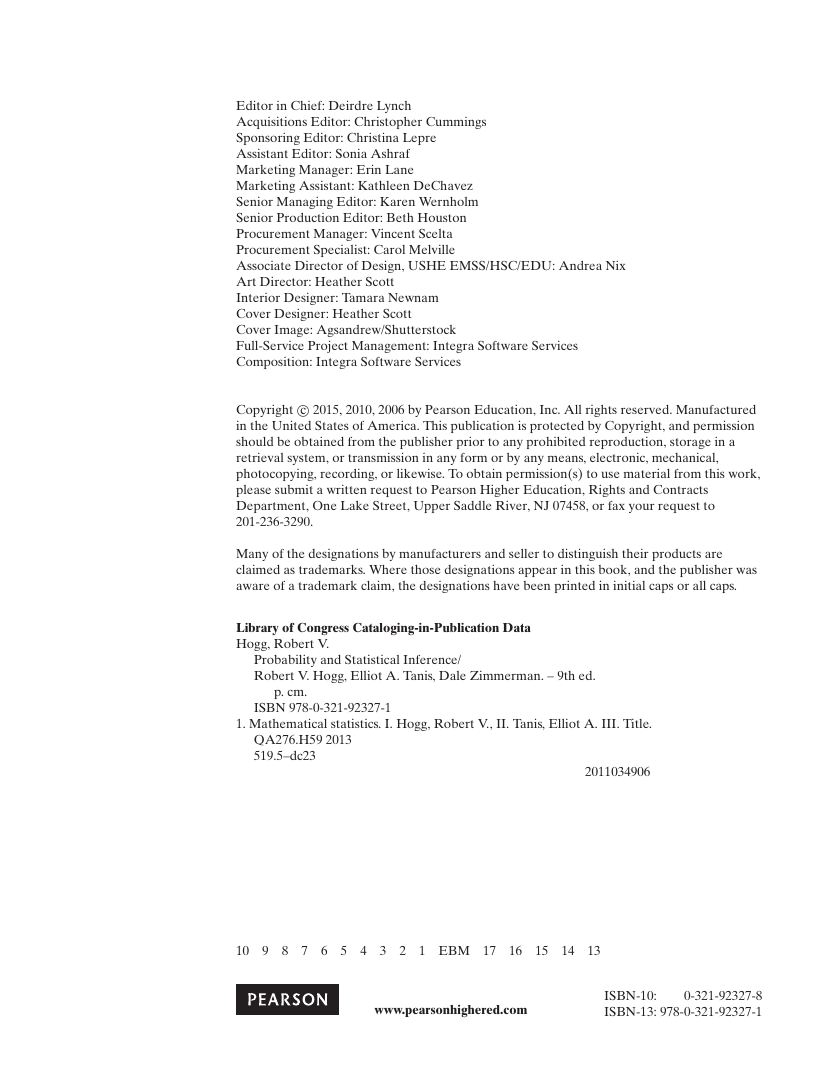
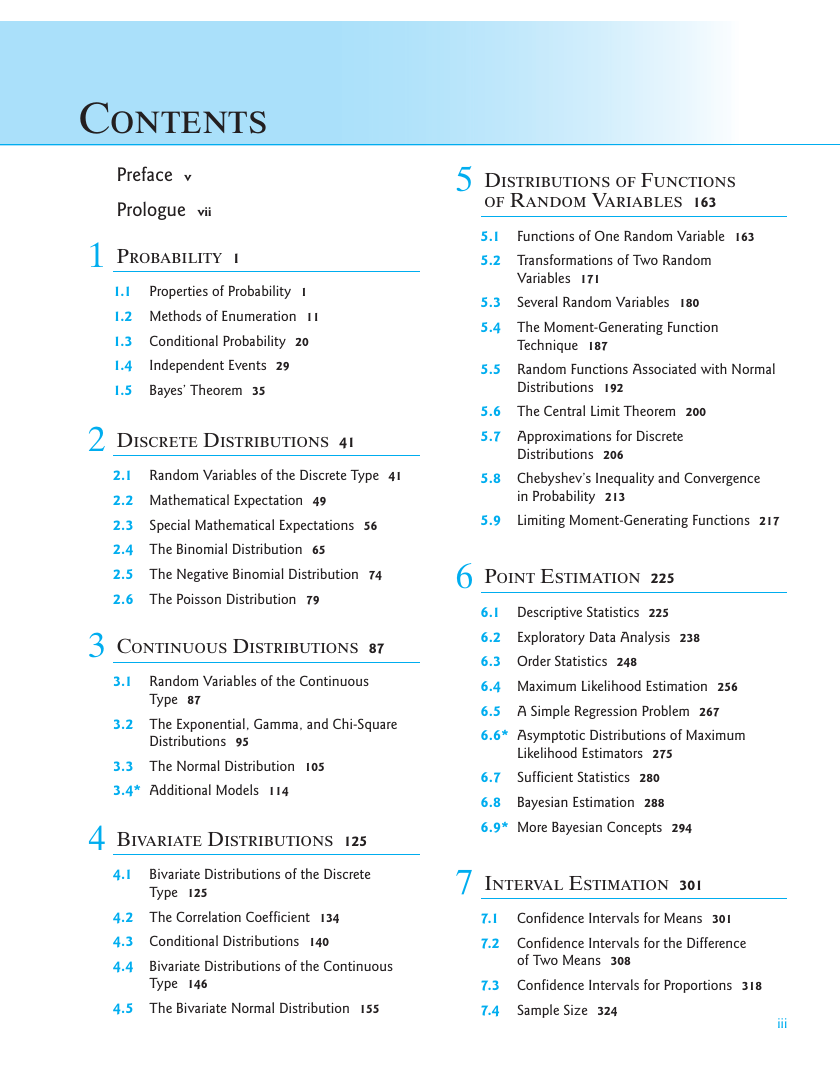
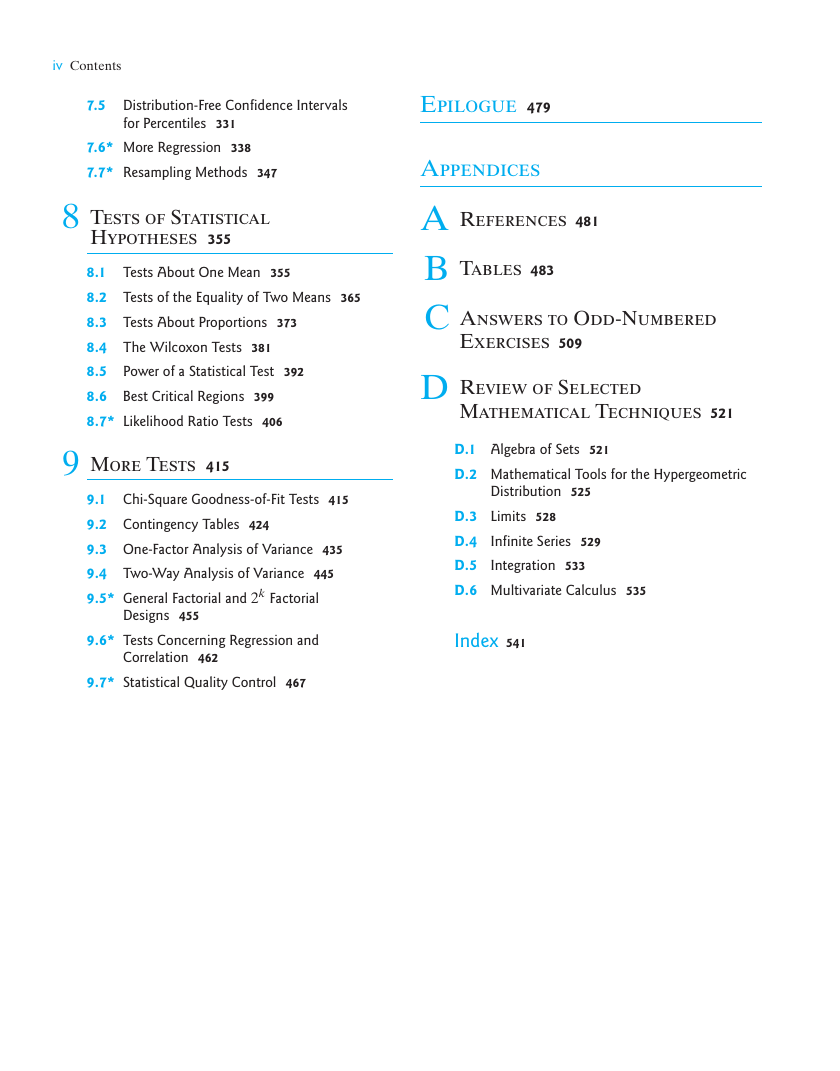
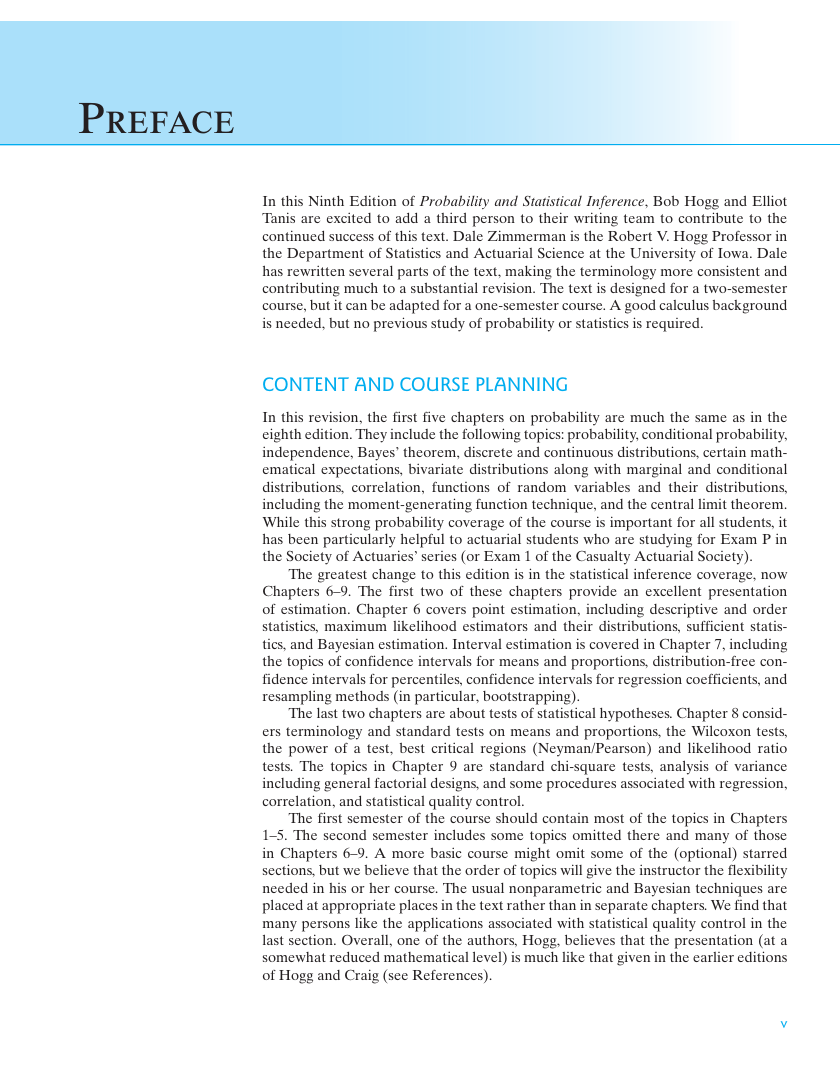
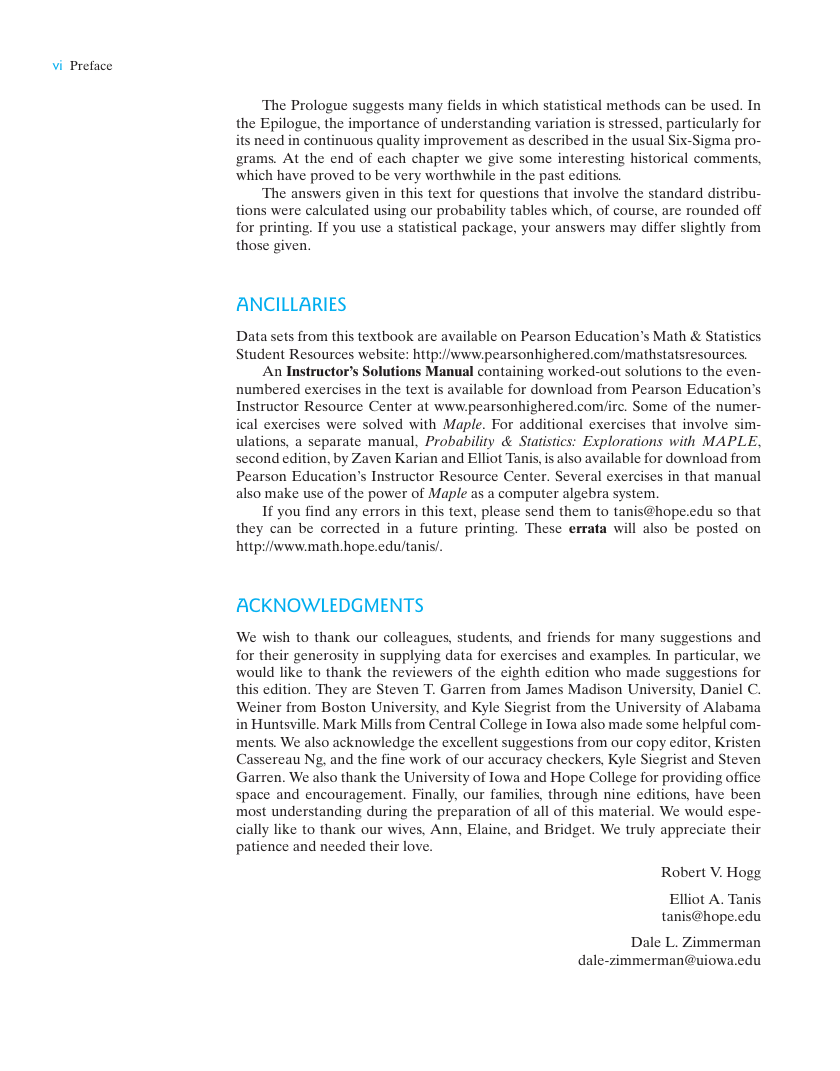









 2023年江西萍乡中考道德与法治真题及答案.doc
2023年江西萍乡中考道德与法治真题及答案.doc 2012年重庆南川中考生物真题及答案.doc
2012年重庆南川中考生物真题及答案.doc 2013年江西师范大学地理学综合及文艺理论基础考研真题.doc
2013年江西师范大学地理学综合及文艺理论基础考研真题.doc 2020年四川甘孜小升初语文真题及答案I卷.doc
2020年四川甘孜小升初语文真题及答案I卷.doc 2020年注册岩土工程师专业基础考试真题及答案.doc
2020年注册岩土工程师专业基础考试真题及答案.doc 2023-2024学年福建省厦门市九年级上学期数学月考试题及答案.doc
2023-2024学年福建省厦门市九年级上学期数学月考试题及答案.doc 2021-2022学年辽宁省沈阳市大东区九年级上学期语文期末试题及答案.doc
2021-2022学年辽宁省沈阳市大东区九年级上学期语文期末试题及答案.doc 2022-2023学年北京东城区初三第一学期物理期末试卷及答案.doc
2022-2023学年北京东城区初三第一学期物理期末试卷及答案.doc 2018上半年江西教师资格初中地理学科知识与教学能力真题及答案.doc
2018上半年江西教师资格初中地理学科知识与教学能力真题及答案.doc 2012年河北国家公务员申论考试真题及答案-省级.doc
2012年河北国家公务员申论考试真题及答案-省级.doc 2020-2021学年江苏省扬州市江都区邵樊片九年级上学期数学第一次质量检测试题及答案.doc
2020-2021学年江苏省扬州市江都区邵樊片九年级上学期数学第一次质量检测试题及答案.doc 2022下半年黑龙江教师资格证中学综合素质真题及答案.doc
2022下半年黑龙江教师资格证中学综合素质真题及答案.doc